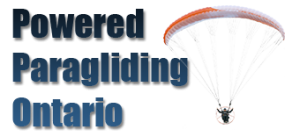Powered paraglider is very lightly loaded aircraft and because of that, it is highly effected by mechanical and thermal turbulence. We avoid thermal turbulence by flying only up 3 hours after sunrise and we do not start flying till 4 hours before sunset. Mechanical turbulence is avoided by flying only if surface wind is less then 20 km/h and in Niagara, we also do not fly if we have east wind more then 10 km/h.
To allow students to go solo for the first time, we need optimal conditions such smooth 12 to 17 km/h wind ideally from southern directions. We often need to wait until we have this before first solo can be done. This requires patience as weather dictates everything when it comes to flying this aircraft. Please understand that this for your own safety which I will not compromise.
There will be time when we will sit at the field waiting for the wind to calm down as we need that perfect airflow. As you progress in your training and add more flights to your log book you will be able to take on full range of the flyable wind velocity which is 0 to 20 km/h. Eventually though you will realize that ideal flight wind range for cross country flights is 0 to 10 km/h with less wind being better.
In the morning we often wait for the grass to dry off as it is often wet and for wind to pick up as this makes take off for a beginner much easier but often within 1 hour the wind gets to gusty for us to continue flying.
I the afternoon we often wait until wind is less then 20 k/m. We then start flying and do not stop till either wind dies around sunset or it get too dark for us to continue. Even if conditions at sunset are still ideal we can only fly up to 30 min after sunset as this is a definition of end of the day in Canada.
All the above requires positive attitude and lots of patience. We can not control the weather. It is the other way around, weather dictates when we can and can not fly powered paragliders. Please keep this in mind through your training.
Thanks and good luck!

